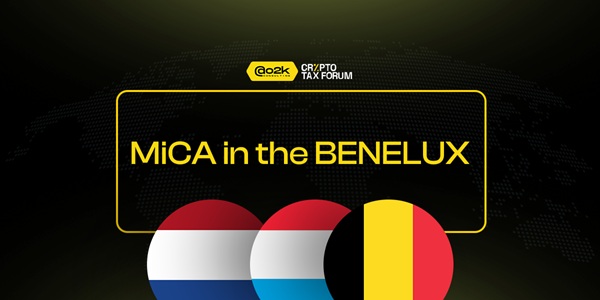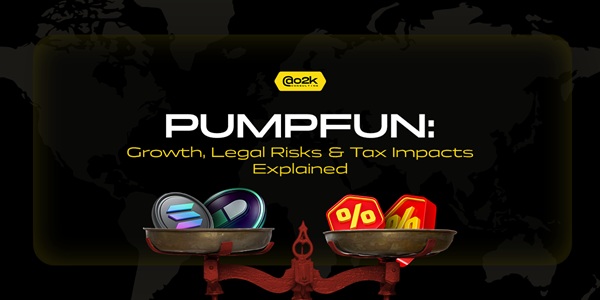The crypto market operates based on demand and supply dynamics. This allows for fluctuation in the price of crypto assets from time to time, making it common for tokens to experience a downward trend which eventually retraces and recovers.
But have you ever invested in a new token, which pumped to a new ATH only to watch your investment go down to zero and never recover? That must have been a rug pull.
A rug pull is a common DeFi scam where the team of a project creates a new token, inflates the price to attract investors, and then disappears with all the funds from the token, leaving investors with a valueless token. This scam typically occurs in new projects that may appear genuine at first. The team behind the project heavily promotes it on social media with influencers and extensive marketing, making the project look promising to potential investors and bringing them on board. When they do, the team withdraws the invested funds and disappears, leaving the investors with a worthless asset.
Unfortunately, rug pulls are alarmingly frequent in the DeFi space, occurring nearly daily. To date, over $26 billion has been lost to cryptocurrency and NFT rug pulls and scams. In fact, during the first six weeks of 2023 alone, there were at least 11 rug pulls, resulting in the theft of over $14 million.
The latest DeFi rug pull was executed by a project known as Magnate Finance, which is a lending protocol on Base Layer 2 network. The team carried out the scam by manipulating a price oracle, which resulted in the theft of approximately $6.4 million in user-deposited funds. To complete the heist, the team went ahead and erased all traces of their digital presence by deactivating their website and social media accounts on Twitter (X) and Telegram, leaving their investors clueless and at a tremendous loss. ( Link to source)
Rug pulls are criminal activity and illegal. While regulations are yet to be implemented to tackle them, you can protect yourself from falling victim to rug pulls. The best way to begin is by learning about the different types and identifying common red flags.
Types of Rug Pulls
There are mainly 3 types of rug pulls. They are:
1. Dumping: This type of rug pull is commonly known as pump-and-dump. It occurs when the developers of the project quickly sell off their large supply of the token immediately after promoting the token and encouraging trade activities. This action crashes the price of the token, leaving investors with a valueless asset. Sometimes, they dump slowly, making it seem like a normal market volatility instead of a premeditated scam.
2. Liquidity removal: This occurs when the team withdraws all the coins in the liquidity pool of the project which removes all the value injected into the token by investors, rendering the token impossible to trade. Liquidity pools are essential to all DeFi protocols because they make the tokens readily tradable. If the liquidity of the token is removed, you will be unable to trade the tokens anywhere even if the tokens are still in your wallet.
3. Limiting sell order: This is a type of rug pull where the developers maliciously code the tokens in a way that makes it impossible for investors to sell the tokens after buying them. They are usually referred to as honeypots.
Identifying Rug Pulls
Most projects that eventually rug pull may appear authentic at first, making it difficult to identify them for what they are. This calls for rigorous research and on-chain analysis on the part of the investor before buying into any project.
How can you spot a rug project?
There are various red flags to watch out for in any project that can help you identify a potential rug pull. Let's look at 5 of these red flags and explore DeFi analytic tools that can help you identify them.
1. No liquidity lock: One of the easiest ways to differentiate a genuine project from a potential rug pull is by examining if the liquidity of the project is locked. Typically, new projects secure their liquidity for a duration of 1 to 5 years, a measure put in place to prevent developers from accessing a predetermined percentage of the token. This lockup is crucial as it restricts their ability to sell off and potentially abandon the project. When assessing a project, it is imperative to not only check if liquidity is locked but also to consider the percentage of tokens that are locked. A higher percentage of locked tokens generally indicates a safer project.
Tool: StaySafu is a good tool to check the liquidity lock of a project. Paste the token contract address on the search bar: https://app.staysafu.org

2. Unhealthy Token Allocation: It is unhealthy for a single wallet address or group of addresses to have a huge allocation of a token. If they dump, it will ultimately affect the token.
Tool: You can examine the wallet addresses of top holders. Search for the name of the token or paste the contract address in the search bar using this tool:

3. Honey pot: A token is considered a honeypot when the smart contract of the token is designed in a way that only the developer can sell the token. The idea is to lure investors to buy and restrict their ability to sell, thereby trapping their investment.
Tool: Paste the contract address of the token to check for honey pot here:
4. Suspicious Creator Address: Another method for identifying a scam project involves analyzing the wallet address of the deployer. The transparency of the blockchain makes it easy to trace the history of every transaction associated with a wallet address. By investigating the deployer address, you can scrutinize its history and on-chain activities, which may reveal its involvement in previous scams. For instance, before the Magnate Finance Rug pull, an on-chain analyst discovered a direct link between the project's deployer address and a previous rug pull involving a project called Solfire, where over $4.8 million was embezzled in January 2023. (Link to source)
Tool: You can discover the deployer address of any project and investigate its activity using Peck shield.

5. Outrageous buy and sell tax: These fees are levied by the developer and will cause the actual value received when selling or buying a token to be less than expected. High taxes are a technique used to defraud investors. Some projects deploy their tokens in a way that makes it possible to fraudulently modify the tax after promoting trade activity.
Tool: Token sniffer is a useful tool to assess the overall health of a token. All you have to do is paste the wallet address:

Avoiding rug pulls
Avoiding DeFi rug pulls requires careful consideration and due diligence. Here are some practical tips to help you minimize the risk:
1. Research Projects: The best way to identify and avoid a potential scam is through thorough research. Conduct adequate research before investing in any project. Your research should include; looking out for any of the above-mentioned flags, verifying the credibility of the team, and their social media presence, studying the project white paper, and understanding the utility of the project.
2. Refrain from FOMO: While it may be exciting to jump into a hyped project, it is risky to make investments without proper scrutiny. Keep in mind that not every new token will become the next big thing, and even if they were, it would be impossible to keep up with every new token deployed. Therefore, it is important to make wise investment decisions and avoid investing based on emotion.
3. Track Record: Investing in projects with a solid track record is a safer approach. Furthermore, centralized exchanges such as Binance and KuCoin adhere to rigorous standards for listing assets, ensuring their safety and legality through a thorough vetting process.
Conclusion
Rug pulls have unfortunately become a prevalent exit scam within the DeFi ecosystem, resulting in substantial losses for investors. However, you can recognize and steer clear of these deceptive schemes through thorough due diligence, aided by verified DeFi analytic tools. It's important to note that exaggerated hype often serves as the calling card of scam projects. Consequently, making investment decisions based on emotions and FOMO should be avoided.
While exploring the ever-evolving world of DeFi, remember that not every new token will become the next big thing. Even if they were, it would be impossible to keep up with every new token deployed. Hence, it is crucial to conduct rigorous research before investing in any project. Stay safe and stay informed.
--------------------------------------------------------------
We hope you enjoyed this blog. We will be explaining more crypto and tax terminologies in subsequent blogs. If you found this content useful, why not share it with your peers?





















.jpeg)



























.jpg)





































